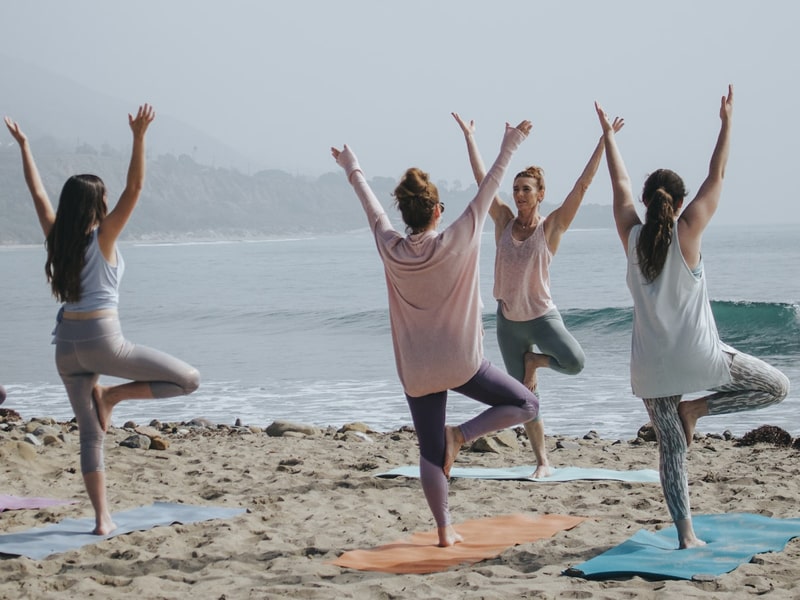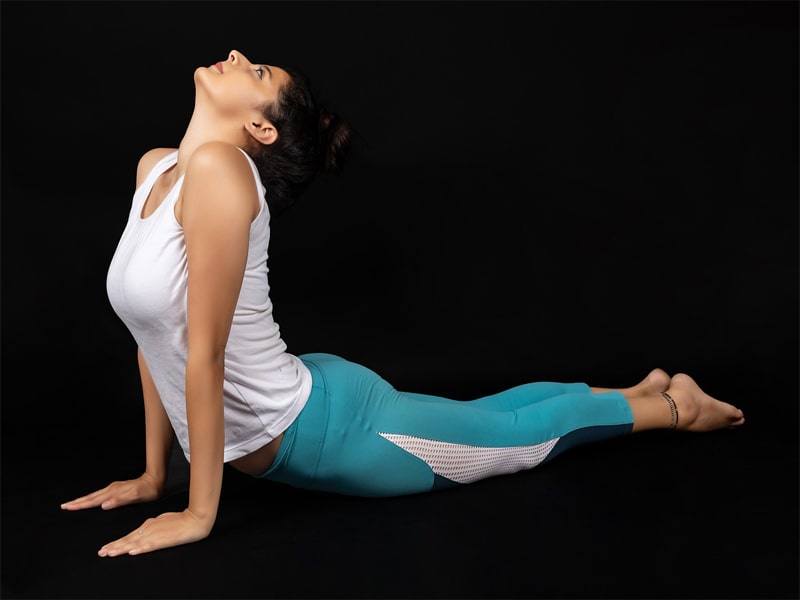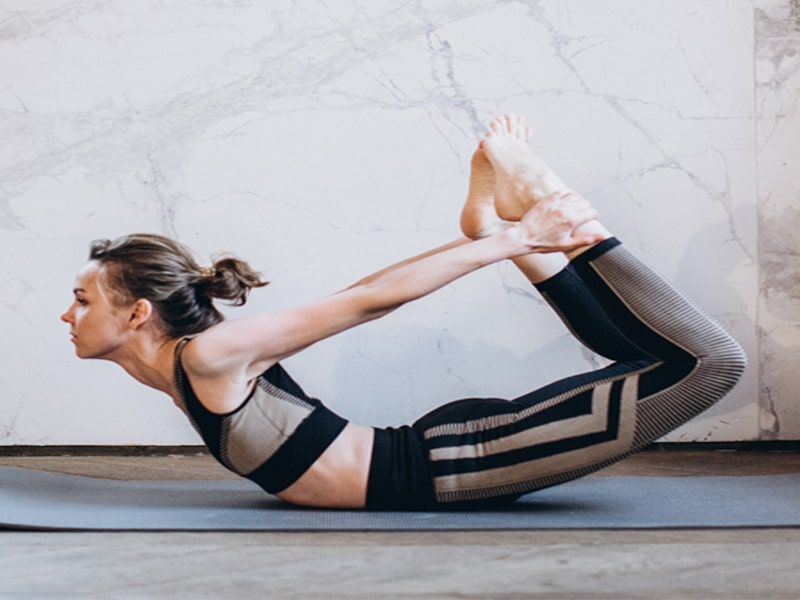Yoga is a popular form of exercise that has been practiced for thousands of years. It originated in ancient India and has evolved over the years to cater to the changing needs of society. One of the most popular forms of yoga today is Power Yoga. But what exactly is Power Yoga and how does it differ from traditional yoga? In this blog post, we will delve into the world of Power Yoga and explore its history, benefits, and practices.
What is Power Yoga?
1. History and Origins
Power Yoga is a modern form of yoga that was developed in the United States in the late 1980s and early 1990s. It is influenced by Ashtanga Yoga, which is a style of yoga that focuses on strength, flexibility, and endurance. Power Yoga is often referred to as a “fitness-based” form of yoga because it emphasizes a fast-paced, dynamic practice that incorporates strength training, cardio, and flexibility into one workout.
2. Characteristics and Features
Power Yoga is characterized by its fast-paced, dynamic movements and flowing sequences. It is designed to challenge both the mind and the body, making it an intense and invigorating form of exercise. Unlike traditional yoga, Power Yoga does not follow a set sequence of poses. Instead, each class is unique and can be tailored to the needs of the students. This makes Power Yoga an accessible form of exercise for people of all fitness levels.
3. Difference from Traditional Yoga
Power Yoga is different from traditional yoga in several ways. Firstly, it is a more physically demanding form of yoga that focuses on strength, endurance, and flexibility. Secondly, Power Yoga does not follow a set sequence of poses, which means that each class is unique and can be adapted to the needs of the students. Finally, Power Yoga incorporates elements of cardio, strength training, and flexibility into one workout, making it a more comprehensive form of exercise than traditional yoga.
Also Read :- Raja Yoga – The Path to Self-Realization
Benefits of Power Yoga
1. Physical Benefits
One of the most obvious benefits of Power Yoga is its physical benefits. The fast-paced, dynamic movements of Power Yoga will help you build strength, increase flexibility, and improve cardiovascular endurance. Additionally, Power Yoga is a full-body workout that targets all major muscle groups, which can help you achieve a toned, healthy physique.
2. Mental Benefits
Power Yoga also has numerous mental benefits. The fast-paced, dynamic movements of Power Yoga can help you relieve stress and increase focus. Additionally, the deep breathing and meditation techniques used in Power Yoga can help you calm your mind and reduce anxiety.
3. Emotional Benefits
Power Yoga can also have a positive impact on your emotional well-being. The fast-paced, dynamic movements of Power Yoga can help you release built-up tension and stress, leaving you feeling more relaxed and refreshed. Additionally, the deep breathing and meditation techniques used in Power Yoga can help you improve your overall mood and sense of well-being.
4. Spiritual Benefits
Finally, Power Yoga has spiritual benefits as well. The deep breathing and meditation techniques used in Power Yoga can help you connect with your inner self and find a sense of inner peace and calm. Additionally, the physical movements of Power Yoga can help you build a strong connection between your body and mind, allowing you to find a deeper sense of self-awareness and spiritual fulfillment.
Also Read :- 6 Best Special Yoga Chairs Online in India
Power Yoga Poses and Sequences
1. Sun Salutations
Sun Salutations are a series of yoga poses that are often performed at the beginning of a Power Yoga class. They are designed to warm up the body and prepare it for the more demanding poses to come. The series typically consists of a sequence of poses that are performed in a flowing manner, and includes poses such as Mountain Pose, Forward Fold, Plank Pose, Chaturanga, Upward-Facing Dog, and Downward-Facing Dog. Sun Salutations are an essential part of Power Yoga, as they help build strength and flexibility, improve balance, and prepare the body and mind for the rest of the practice.
2. Warrior Poses
Warrior Poses are a series of yoga poses that focus on building strength, stability, and endurance. These poses, such as Warrior I, Warrior II, and Warrior III, are designed to challenge the body and help build strength in the legs, hips, and core. Warrior Poses are an important part of Power Yoga, as they help increase physical endurance, improve balance, and build mental focus.
3. Balance Poses
Balance Poses, such as Tree Pose and Eagle Pose, are an important part of Power Yoga. These poses require you to balance on one foot and engage the core muscles, which helps improve stability and coordination. Additionally, Balance Poses are designed to challenge the mind, as they require concentration and focus to maintain proper alignment.
4. Inversion Poses
Inversion Poses, such as Shoulder Stand and Headstand, are an important part of Power Yoga. These poses require you to turn your body upside down, which can help improve circulation, reduce stress, and increase energy levels. Inversion Poses are designed to challenge both the body and the mind, and can be a powerful tool for improving physical and mental well-being.
5. Cool Down and Relaxation Poses
Finally, Power Yoga includes a series of cool down and relaxation poses, such as Child’s Pose and Savasana. These poses are designed to help the body relax and recover from the intense physical exertion of the practice. Additionally, these poses can help calm the mind and reduce stress, leaving you feeling refreshed and rejuvenated.
Also Read :- 6 Best Aerial Yoga Hammock Swing in Indian Market
How to Incorporate Power Yoga into Your Fitness Routine
1. Finding a Power Yoga Class or Teacher
If you are interested in incorporating Power Yoga into your fitness routine, the first step is to find a class or teacher that you feel comfortable with. Look for a class that is taught by a qualified and experienced instructor who can guide you through the poses and sequences. Additionally, look for a class that is designed for your skill level and fitness goals, whether you are a beginner or an advanced practitioner.
2. Creating a Home Practice
If you cannot find a Power Yoga class in your area or prefer to practice at home, you can create your own home practice. There are numerous online resources, such as video tutorials, books, and websites, that can help you get started. When creating a home practice, it is important to start with a basic sequence and gradually build up as you become more comfortable with the poses. Additionally, it is important to listen to your body and take breaks if you feel any discomfort or pain.
3. Incorporating Power Yoga with Other Forms of Exercise
Power Yoga is a comprehensive form of exercise that can be incorporated with other forms of exercise, such as weightlifting, cardio, and strength training. Incorporating Power Yoga into your fitness routine can help improve your overall fitness and well-being, as it focuses on strengthening the mind, body, and spirit.
4. Setting Realistic Goals and Tracking Progress
Finally, it is important to set realistic goals and track your progress when incorporating Power Yoga into your fitness routine. Whether your goal is to increase strength, flexibility, or improve your overall health, it is important to set achievable goals and track your progress. This will help you stay motivated and focused on your fitness journey.
Also Read :- Yoga For Stress Management – Say Goodbye to Stress
Conclusion
Power Yoga is a dynamic and challenging form of yoga that offers numerous physical, mental, emotional, and spiritual benefits. It is characterized by a focus on strength and endurance building, and combines traditional yoga poses with elements of cardio and strength training.
The practice includes a series of sun salutations, warrior poses, balance poses, inversion poses, and cool down and relaxation poses. Incorporating Power Yoga into your fitness routine can be done by finding a class or teacher, creating a home practice, incorporating it with other forms of exercise, and setting realistic goals and tracking progress.
In summary, Power Yoga is a powerful tool for improving overall health and well-being, and can be a valuable addition to any fitness routine. Whether you are a beginner or an advanced practitioner, Power Yoga is a challenging and rewarding practice that can help you achieve your fitness goals.
Final thoughts and recommendations
For those looking to improve their physical and mental well-being, Power Yoga is a great option. It is important to remember to listen to your body, start slow, and gradually build up as you become more comfortable with the poses and sequences. Additionally, finding a qualified and experienced teacher can be invaluable in helping you get the most out of your practice.
Encouragement to Make Power Yoga a Regular Part of a Fitness Routine
We encourage you to make Power Yoga a regular part of your fitness routine. With its focus on building strength, endurance, and mental focus, Power Yoga can help you achieve your fitness goals and improve your overall health and well-being. So why not give it a try today and experience the numerous benefits of Power Yoga for yourself?



